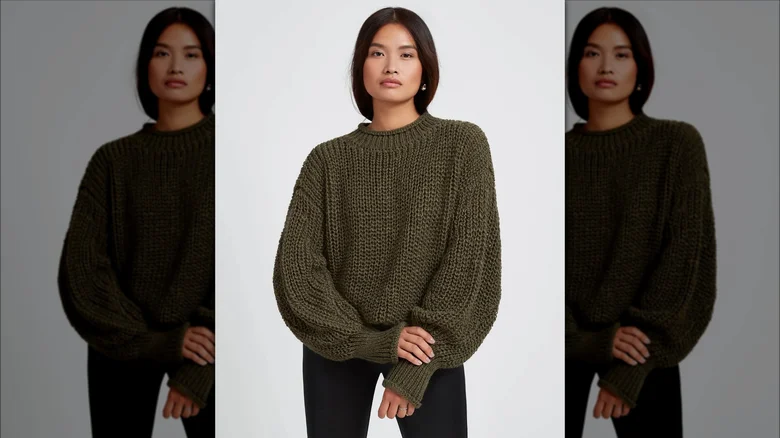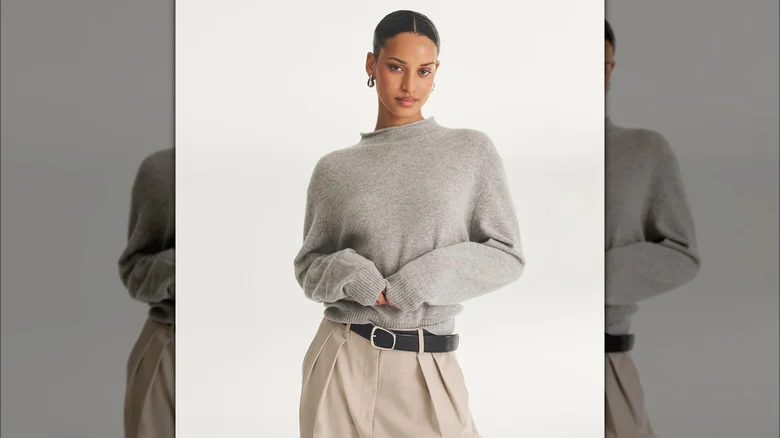What Happens When Under Consumption Becomes Just Another Trend?

The idea of reducing our consumption (but making it “aesthetic”) is nothing new, from the contemporary minimalist movement to the “de-influencer” trend to the heyday of the Marie Kondo method. It arguably even dates back further, to the World War II mandate to “make do and mend.”
Now a shiny new variation has emerged in popular culture. On TikTok and Instagram, where people are more likely to brag about collecting high-end designer brands and unpacking huge purchases on camera, influencers boast about wearing the same ripped jeans from seasons past or using the same hair straightener for over a decade without feeling the need to upgrade. And since everything on TikTok is quickly tagged with the word “-core,” whether we like it or not, the “underconsumption core” was swiftly dubbed as the next big trend by users. But is it merely a passing trend with the ephemeral shelf life of last winter’s mob wives? Or could it represent a growing lifestyle movement? Perhaps it’s even seen as stolen working-class value? It really depends on whom you ask in these discussions.
But while Barber’s lifestyle could be considered an example of basic underconsumption, she is reluctant to use that term. “I get a little worried when people call it basic or a trend. No, no, no, no, no. That’s called living a normal life,” she says. “It’s called doing normal things that we should all be doing—the way we lived for a long time and the way our parents lived. But if calling it a trend is what makes people care about it, then I’m here for that too.”
I get a little worried when people are conventional or trendy. That’s what you call living a normal life.”
She observes that the current fascination with underconsumption online is rooted in the concept of disinfluence, which she describes as beginning with a message of “You don’t need this.” Then those looking to profit from the trend pivoted to saying, “Don’t buy this; buy this instead!” She expresses concern about how this message can be manipulated to serve the consumerist cycle we seem trapped in. With social media’s relentless push for “next, next, next,” she worries that any progress made could be fleeting. “How do we sustain this movement? How can we prevent it from becoming just another trend and start considering how it should be integrated into our daily lives?”
Andrea Cheong, the author of Why Don’t I Have Anything to Wear and host of the podcast Fashion Our Future, has always emphasized the concept of “sustainable shopping, not sustainable brands,” because, as she puts it, “you can’t really buy sustainability.” She believes that our relationship with clothing consumption is somewhat broken and in need of reevaluation. “I don’t think anyone has genuinely been taught to buy [clothes] the way we’re taught to buy food—by reading nutritional labels.”
Like Barber, Cheong reminds me that what might seem like a brand-new trend on your For You page is actually a long-standing practice found in many communities around the world. For example, she notes that in some Asian cultures, used clothing was often transformed into pajamas or cozy “loungewear.” The only difference now is that we have a wider window into diverse approaches to consumption. Social media “has invited anyone who can download an app and upload a video to create content. And so, before there was this elitist hierarchy of influencers or celebrities; now we have a much more democratized algorithm,” she says. Another significant factor driving the movement is the backlash against shopping excesses and the pervasive overconsumption culture within our feeds that constantly encourages us to “swipe up to see more.”
This is not going to go away…you will see its traces everywhere.”
“People who have always engaged in this practice will continue to do it, and maybe people who were previously unsure or embarrassed about it won’t feel as self-conscious anymore. [But] I don’t necessarily think it’s going to cause a radical shift in perspective,” Cheong says. What she does find particularly interesting is that “people don’t do these things because, first of all, they think, ‘I’m very sustainable.’ They do it primarily because it saves them money.” Ultimately, she believes that “it doesn’t really matter how we get there. As long as people adopt these more conscious and mindful practices, the goal remains the same: slow down, buy less, and use things more often.”
“Calling it a trend doesn’t mean it just appeared. It means it’s actually very ingrained in something. When someone hears the word trend, we think of it as a passing thing,” she adds. “This isn’t going to go away. It will manifest itself in slightly different ways, but traces of it will be everywhere.”
